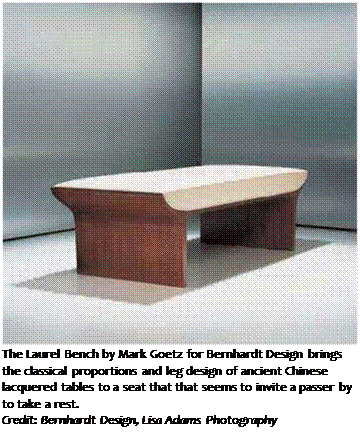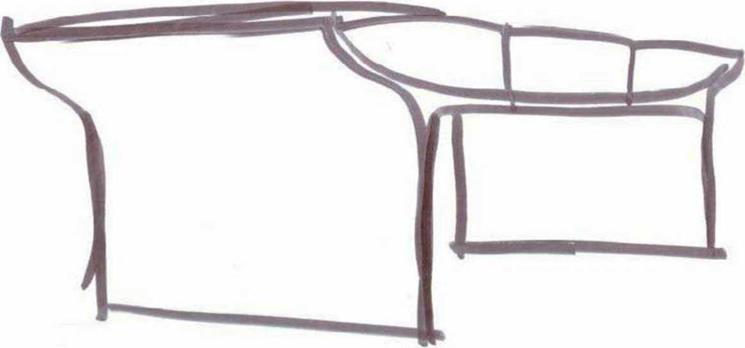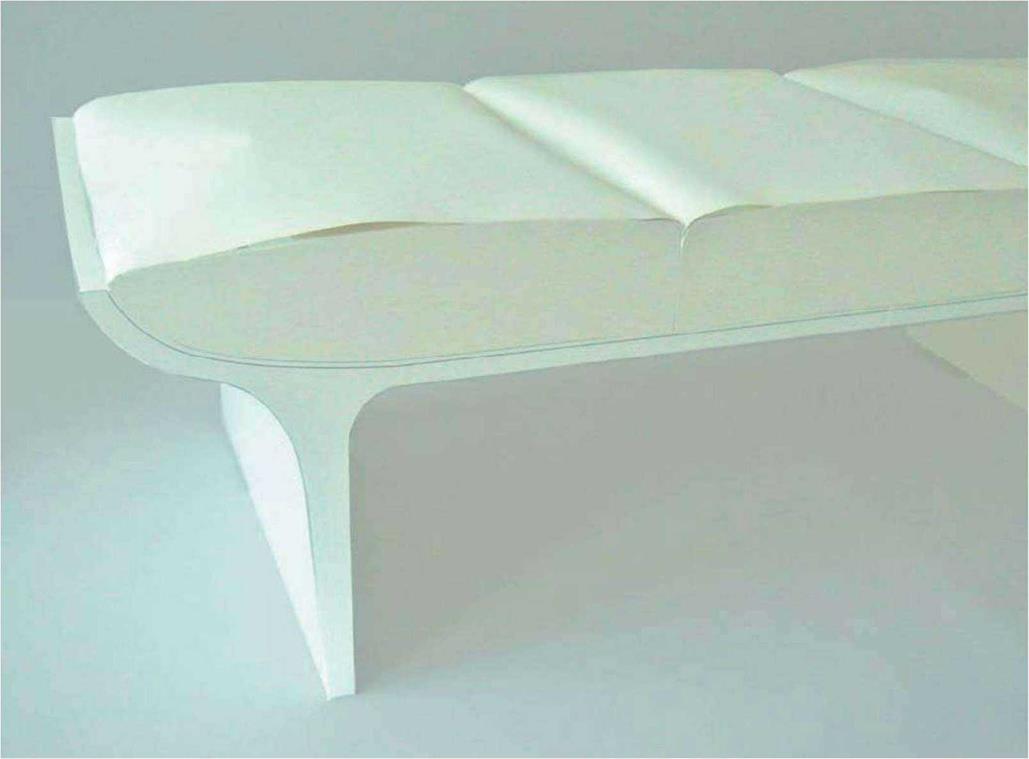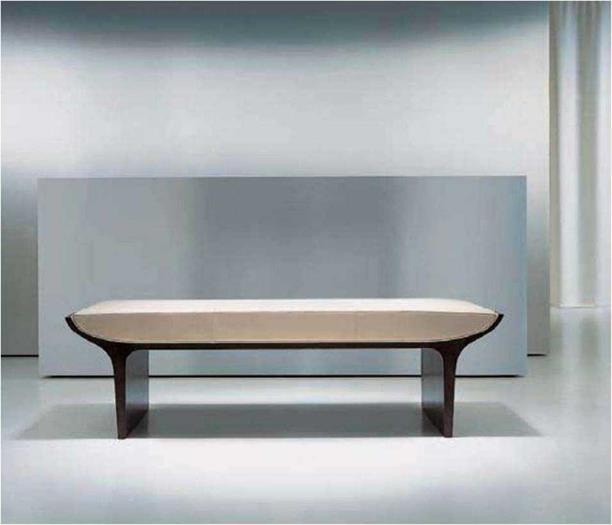
 “The need, identified by Bernhardt Design, was to develop a bench for architectural settings, specifically hotels, hallways, any kind of business environment.” He pauses before adding, “And then, my sort of hopeful and less verbalized intention was for it to find it’s way into people’s homes.”
“The need, identified by Bernhardt Design, was to develop a bench for architectural settings, specifically hotels, hallways, any kind of business environment.” He pauses before adding, “And then, my sort of hopeful and less verbalized intention was for it to find it’s way into people’s homes.”
Once these basic parameters had been identified, Goetz looked to the distant Far East for inspiration. “A lot of my designs have an element of old and new,” he says, “and recently, I’ve been very interested in the notion of very ancient shapes. I think it’s interesting that pieces from ancient history have a sort of truth and freshness about them. For this piece, I was looking at Chinese antiquity. I was looking at some Chinese altar tables, often seen in black lacquer. They have a quality that lets objects put there be presented beautifully. The other thing I love about these tables is that they don’t have four legs, but they go into space as long planes. I’m interested in elements that are found in ancient objects but are also relevant and current today.”
This focus on presentation and leg shape became central design influences. “Instead of taking objects like a bowl or a candle and putting the object on a table, I thought of the idea of presenting a very soft and comfortable cushion. The intention of the bench is like two hands presenting this cushion to the person who might sit there. That has been a theme through some of my furniture in the past, the idea of creating a piece that actually welcomes the sitter and invites them to sit down.” He adds, “One of the really relevant points of the piece is that you’re used to seeing a bench with four legs, but in this, the solidity and massiveness is achieved by this monolithic leg going back.”
In order to realize these ideas, Goetz takes himself through a uniquely physical process of sketching. Instead of using pads of paper and a desk, he places oversized sheets onto the wall of his studio and sketches oversized. “I like to think of working not using just my hands, but to sketch by using my whole arm and upper body because I actually want my arm, as it draws my intention on the wall, to go through a complete gesture.” Goetz explains the significance of the result: “Because it’s full size, I’m able to achieve something that at the beginning is very bold. I work with very broad lines, with a broad tip magic marker. What I’m trying to do at first is, in a way, draw a mark on a sheet of paper on the wall that captures the feeling and gesture that I want for the piece.” Goetz compares his experience with the vertical surface to what he imagines happens on the street. “One of the things I love about graffiti —and I hate many things about it— is that when people create graffiti, they’re creating these lines very rapidly. They’re very fluid, they have a lot of energy, and the line is coming right out of their expressions. They’re not thinking or planning their line; it’s just coming right out. I try to have a feeling, and let it just happen on the wall.”
© Goetz’s first sketches, done full size using a thick felt – tip pen on pieces of paper tacked to a wall, already show the elegance of line and distinctive leg shape that will define the Laurel Bench. Credit: Mark Goetz
 (2 Below left: Another early drawing captures the essential quality of formal presentation that Goetz found in Chinese altar tables and tried to replicate for the Laurel Bench. Credit: Mark Goetz
(2 Below left: Another early drawing captures the essential quality of formal presentation that Goetz found in Chinese altar tables and tried to replicate for the Laurel Bench. Credit: Mark Goetz
 |
Below right: After drawing many lines, Goetz uses masking tape to remove lines that are not pleasing or extraneous. He also layers tracing paper on top of earlier sketches and compares the gestures he creates. This final drawing brings the line of the Laurel Bench down to its most essential quality. Credit: Mark Goetz
|
122 DESIGN SECRETS: FURNITURE |
|
 |

@ A paper model is made to full scale. Goetz feels
strongly that a sensually accurate model helps a piece of furniture suddenly come alive and become real in the designer’s—and sometimes, potential user’s— minds. Credit: Mark Goetz
The Laurel Bench is offered in a variety of finishes and upholstery options, but Goetz is partial to the high- drama of the high-contrast between dark wood and a light cushion, as shown here.
 Credit: Bernhardt Design, Lisa Adams Photography
Credit: Bernhardt Design, Lisa Adams Photography
|



